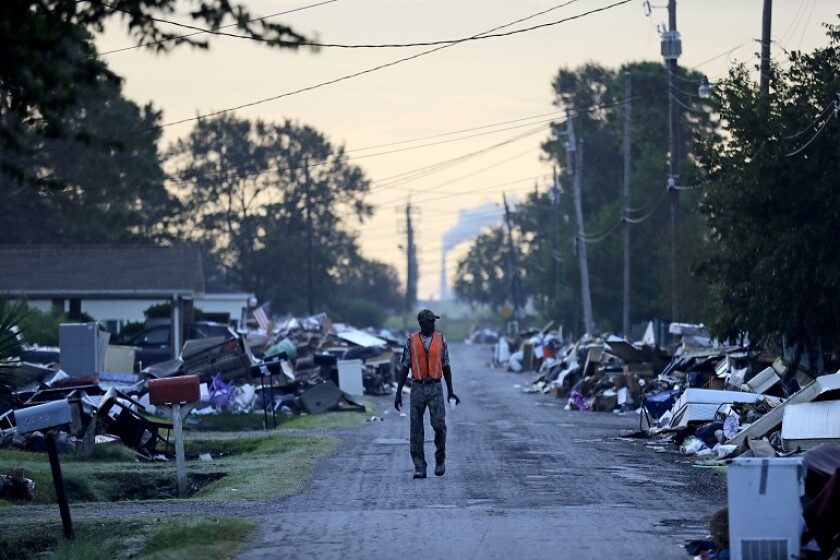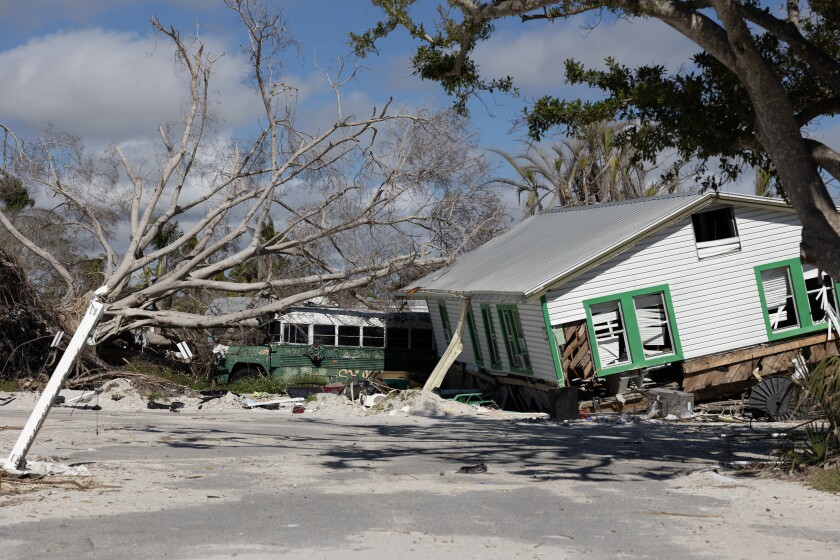When wildfires burned virtually every inch of Lahaina in Hawaii back in August, President Biden flew there to be with those suffering. He and his wife walked down Front Street and came back to tell his audience that “the devastation is overwhelming.” He said he had signed a major disaster declaration “that mobilized the whole-of-government response, which means whatever you need, you’re going to get.”
But when Biden got back to Washington, the conversation shifted. The Federal Emergency Management Agency's (FEMA) emergency fund was broke, because of enormous flooding in California during the spring, an April tornado outbreak in the Midwest and South, Hurricane Idalia’s destruction in Florida during August, more flooding in New England during September, and then of course, the fires in Hawaii. Federal climatologists added up the cost of 139 major disasters since 2016 and found a total of $1.1 trillion, as well as the loss of more than 5,200 lives. It was getting harder to keep the fund full.
And then, to make things worse, refilling the emergency fund got caught in congressional wrangling over the budget.
The late economist Howard Kunreuther had a strategy for dealing with the soaring costs of disasters. He argued that all natural hazards should be part of a standard homeowner policy. That, he said, would get the government off the hook for big costs every time a disaster struck—and it would provide homeowners with economic incentives to do everything they could to minimize damage.
Kunreuther made that proposal soon after the tremendous devastation of Hurricane Katrina in 2005. It’s a proposition that has broad support in principle among economists. And yet it has been impossible to put it in place.
Kunreuther’s proposal makes a lot of sense: break the cycle by building the risk of properties into the cost of homeowners insurance, require that insurance as a requirement of home mortgages, create financial incentives for reducing risks by not buying in flood zones to begin with or by upgrading homes to shrink premiums — and keep the cost of the disasters off the federal budget. And then, to make sure that the plan doesn’t impose impossible burdens on the poor, provide subsidies so they can buy insurance. It’s a clear and elegant plan.
But it’s also where the wheels fall off the bus. No one wants a dramatic increase in the price of homeowners insurance. Pricing risk into that insurance would significantly drive up the cost of homeownership and make it harder for many Americans to own a home.
With climate change increasing the number and severity of big, damaging events, insurance companies are running away from risk. Nearly 90 percent of all the property claim lawsuits in the country since 2020 have been in Florida. Bankers Insurance, Farmers and Lexington Insurance have all pulled out of the state. Seven additional Florida insurers have become insolvent due to disaster losses.
In California, Allstate, Farmers and State Farm all announced earlier this year they weren’t going to write any new homeowner policies. That makes seven of the 12 largest California insurers that are pulling back, because of both floods and fires. Liberty Mutual has stopped insuring business owners.
Meanwhile, many homeowners have decided just to pass the cost of rebuilding on to FEMA. The federal agency is dealing with a phenomenon called “severe repetitive loss”: properties where the owners have filed at least four flood insurance claims of at least $5,000 each, or where the total of the claims was at least $20,000; or at least two claims where the damage exceeds the value of the building. In 2020, FEMA found 37,786 such properties across the country, including more than 2,100 in Florida — and nearly 8,000 in Texas. Property owners just kept filing claims.
One home in Batchelor, La., flooded 40 times in the last 40 years. The owner collected $428,379 in insurance payments from the government. Across the country, half of the “severe repetitive loss” homes got a payout that exceeded their total value.
Most homeowners, however, don’t pay for flood insurance. When Hurricane Harvey hit Houston back in 2017, 80 percent of homeowners didn’t have flood insurance coverage. Most Americans believe big storms will hit their community in the next decade. But most of them don’t think a storm will hit them.
For insurance companies, the big picture of climate change tells them that they’ll be facing more big payouts, and they worry they won’t be able to break even. That’s a problem that gets worse as insurance rates go up and more people drop out.
In California, there’s a proposal to allow companies to consider climate change — and future risks — in pricing their policies. The companies would be required to provide coverage for everyone in an area facing risks from wildfires and floods. The proposed changes, state officials hope, would make it possible for companies that have left to come back and do business in the state. But big debates remain before the policy can take effect.
One involves the shadowy world of “reinsurance,” under which private insurance companies buy themselves coverage to protect against big losses. The reinsurers, many based in Europe, provide an invaluable service by keeping the entire industry afloat. Real reforms demand that reinsurers play a role in state insurance planning. Without their participation, no private American company would want to write policies. But the states aren’t sure how to deal with the reinsurers.
It would be hard to concoct a more complicated problem — private companies, regulated by the states, supported by multinationals, selling insurance to consumers who aren’t sure they want to buy their product, for problems that seem certain to increase. Without solutions by state regulators, the feds will have to keep writing checks to rebuild the same properties over and over again.
So the states have to be the front line of reform. If that doesn’t happen, the current crisis in FEMA’s emergency fund is certain only to repeat itself. People who have lost everything will increasingly find themselves trapped in federal budget battles that seem never to get solved.












